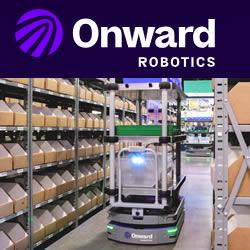Laboratory robotics: Automation, efficiency and adaptation
Fixed robotic solutions, such as desk-mounted arms or dedicated workstations, can automate certain tasks but lack mobility. In contrast, autonomous mobile robots (AMRs) like RB-THERON+ from Robotnik combine mobility, manipulation, and autonomy in a single system.
Advances in research, biotechnology, pharmaceuticals, and clinical diagnostics demand increasingly fast, precise, safe, and efficient processes. In this context, automation and robotics have become key tools to minimize errors, shorten experimental cycles, and free scientific personnel from repetitive tasks, allowing them to focus on higher-value activities.
This has led to the concept of the smart laboratory: one that integrates technological tools such as robotics, Artificial Intelligence, and digitalization systems to optimize and accelerate certain processes, enable more advanced decision-making, and improve researcher safety.
This article presents some of the applications that mobile manipulators robots as RB-THERON+ can perform in laboratory environments, their advantages, challenges, and future trends.
AUTOMATION IN LABORATORIES: TREND-SETTING DATA
The recent World Robotics Service 2025 report from the International Federation of Robotics (IFR) highlighted that the diagnostics and laboratory analysis sectors experienced unprecedented growth in mobile robotics adoption in 2024, with nearly 3,300 units sold, representing a 610% increase compared to the previous year.
This extraordinary growth reflects the rising demand for robotic solutions aimed at laboratory automation, particularly in the European market. The report notes that numerous traditional industrial robot manufacturers supplied equipment for medical and laboratory applications for the first time, indicating a convergence between the industrial and biomedical sectors. Key factors driving this trend include demographic shifts reducing the availability of specialized personnel and the need to maintain productivity and traceability in highly regulated environments.
RB-THERON+: AN AUTONOMOUS MOBILE MANIPULATOR FOR LABORATORY AUTOMATION
Fixed robotic solutions, such as desk-mounted arms or dedicated workstations, can automate certain tasks but lack mobility. In contrast, autonomous mobile robots (AMRs) like RB-THERON+ from Robotnik combine mobility, manipulation, and autonomy in a single system.
Advantages of RB-THERON+ over fixed robotic arms include:
• Autonomous navigation without guides: Uses SLAM technology with LiDAR sensors, RGB-D cameras, and 2D scanners, eliminating the need for physical beacons or guide rails
• Hardware and software modularity: Configurable based on the application, with different mobile bases (differential or omnidirectional) and expandable batteries
• ROS 2 architecture: Over 400 packages available for customization with languages such as C++, Python, or HTML
• Teleoperation and remote control: Advanced HMI interface for monitoring, configuration, and control at a distance
• Certified safety: Compliance with ISO 3691-4 and ISO 13482, integrated collision avoidance system, and emergency stop button
These capabilities make RB-THERON+ an optimal solution for laboratories seeking flexible, safe, and scalable automation, adapted to the demands of modern research.
REAL APPLICATIONS OF MOBILE MANIPULATORS IN LABORATORIES
Some of the tasks a mobile manipulator can perform to reduce workload in laboratories include:
Handling biological or chemical samples
• Picking up, transporting, and placing test tubes or vials
• Precise liquid transfers between containers
• Preparing samples for automated analysis
Reagent dosing and mixing
• Accurate measurement of volumes according to predefined protocols
• Controlled agitation of reagents
• Reducing human error in repetitive or critical tasks
Loading and unloading analysis equipment
• Inserting and removing plates or tubes from centrifuges, analyzers, or incubators
• Automatic feeding of samples to diagnostic devices
Inventory management
• Classification and storage of reagents or consumables
• Barcode scanning and automatic logging in inventory systems
• Monitoring expiration dates and stock levels
Preparation of slides and plates
• Applying samples to slides for microscopy
• Sealing, labeling, and organizing Petri dishes or microplates
Assistance in repetitive and routine tasks
• Washing and drying laboratory materials
• Restocking workstations
• Automated cleaning and disinfection of surfaces or utensils
Internal logistical support
• Transporting trays, samples, or materials between laboratory areas
• Coordinating with other automated equipment (e.g., conveyors or fixed robotic arms)
Featured Product

